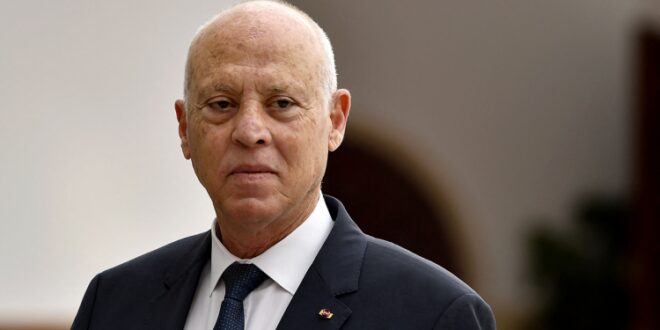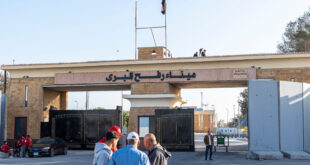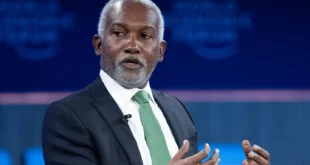Many analyses of Tunisia post July 25 have concentrated on assessing President Kais Saied’s reshaping of the political system in terms of where they place Tunisia in a binary classification system of “democracy” or “authoritarianism/dictatorship.” Some of these transitology studies are slightly more nuanced, inserting a linearity or hybridity to the assessment schema. More critical analysts have pushed back against U.S. political scientists’ focus on procedural democracy. Rather than attempting to more accurately slot Tunisia into the “democracy transition” or “regime type” framework, this paper assesses the post-July 25 political system with reference to the legacy of Tunisia’s own revolution of 2010-11.
Long before his seemingly sweeping changes to Tunisia’s political system — dragged out across announcements on July 25, Sept. 22, and Dec. 13 — President Saied had cast himself as reviving the revolution. He has consistently juxtaposed himself against a political elite, claiming the mantle of outsider and voice of the people while regularly invoking the revolution and its slogans. He built his personal popularity and 2019 presidential candidacy around the revolution and justified the legitimacy of his post-July 25 decisions by their supposed fidelity and service to the revolution he believes was subsequently “usurped.” But while some of Saied’s rhetoric as well as his symbolic and legislative decisions may appear to some as revolutionary, the post-July 25 political system has thus far maintained continuity from both the pre- and post-revolutionary way in which the state governs: a top-down, policing approach with deference to — and reinforcement of — existing socio-economic hierarchies. In presiding over and perpetuating this system, whether with verve or reluctantly, Saied has become an ordinary politician, following in the footsteps of many others who have held positions of power.
Revolutionary symbolism
In terms of committing to reviving or continuing the revolution, some of President Saied’s steps have been explicitly symbolic. One has been meeting with and (ostensibly) listening to people who have been victims of state repression, such as the “martyrs” of the revolution — those wounded or the families of those killed by security forces during the uprising. Saied has also met with victims of the state’s socioeconomic policies, for example his 2019 meeting with desperate, unemployed people from Gafsa. That meeting amplified their demands, which had been largely ignored by mainstream press until he hosted the group at the palace.
Both are examples of a symbolic shift: a president recognizing the state and its authorities as agents of oppression. This stands in sharp contrast to Saied’s predecessor, President Beji Caid Essebsi, who fostered a counterrevolutionary project to block transitional justice and resurrect the “prestige of the state” (the implication being that this prestige had been harmed by the revolution). Beyond symbolism, in material terms Essebsi even tried to put down socioeconomic protests with the military.
But despite Saied’s symbolic change, there appears to be continuity of policy in the post-July 25 era as security forces are still used to quell protests — as seen in the use of force against environmental protests in Agareb in November. While the president subsequently met with Agareb representatives and was reported to have promised to free those detained, this and Saied’s rebuke of security officials following an earlier use of force against peaceful demonstrators haven’t been sufficient to stop repressive police violence. In fact, there are some indications that security forces may feel emboldened to use force indiscriminately after July 25.
Another of President Saied’s symbolic homages to the revolution has been changing the date of the revolution’s commemorations from Jan. 14 to Dec. 17. Also symbolic was his nationally televised speech in September from Sidi Bouzid, where Mohammed Bouazizi lit himself on fire on Dec. 17, 2010. In that speech he announced the suspension of much of the 2014 constitution. Saied and many other critics of the post-2011 political transition process see the initial uprising from the “marginalized,” even victimized regions of Tunisia’s periphery as the real revolutionary moment. In this reading, the decapitation of the regime with the fleeing of President Zine El Abidine Ben Ali on Jan. 14, 2011 is not the highpoint of the revolution but rather the beginning of its neutering and cooptation by a political elite who sacrificed the head to maintain as much of the old regime as possible.
Mere symbolism?
While there is a clear break after July 25 from the counterrevolutionary trends of previous governments in terms of rhetoric and symbolic gestures, this appears to be less true in terms of tangible policies. Even at the symbolic level, Saied’s decision to cancel Jan. 14 as a day of commemoration has drawn protest by the families of those killed and wounded in the revolution. Only two days before the 11th anniversary of Jan. 14, 2011, Saied’s prime minister, Najla Bouden, announced a nighttime curfew and the suspension of freedom of assembly and protest for two weeks. This decision was farcically justified on the grounds that it was intended to slow the spread of the Omicron variant. Bouden’s predecessor, Hichem Mechichi, did exactly the same thing the previous year, sparking outrage and mass protests that the government subdued with police violence. Ironically, Mechichi’s cynical and ineffective use of COVID lockdowns to stem social unrest had been behind some of the popular anger that drove support for Saied’s July 25 decisions.
While President Saied’s discourse has foregrounded victims of state abuses and killings, long before July 25 those victims had expressed increasing desperation and outrage at delays in judicial proceedings — something international observers have also pointed to as “undue delay” in delivering justice, with the International Commission of Jurists noting that “Tunisian authorities have abdicated their responsibility” in the case of the Specialized Criminal Chambers set up as part of the post-revolution transitional justice process. Under President Saied’s vastly expanded executive powers — including attempts to intervene more directly in the judiciary — some court cases have been accelerated, but they are not the cases relating to victims of state violence or transitional justice; rather, the cases that have been fast-tracked are those prosecuting political opponents and critics of the president. Some of those cases, which have proceeded outside the normal judiciary and prosecution system, have raised alarms, with the United Nations issuing a statement raising “serious questions regarding abduction, enforced disappearance, and arbitrary detention.” At the same time, there has been no further commitment either by Saied or his government to the Truth and Dignity Commission or its extensive final report that offers multiple policy recommendations on how to end impunity to prevent future state abuses.
The new government’s symbolic recognition of the victimized nature of Tunisia’s interior regions has also not come with concomitant policy measures to address the issue. While Saied’s proposal for a bottom-up council democracy system could conceivably decentralize power in a way that is more effective than decentralization efforts to date, thus far the president’s scrapping of the Ministry of Local Affairs and assigning many local issues back to the Ministry of Interior seems to reverse the tentative decentralization efforts of recent years, as Chaima Bouhlel has noted. At the same time, the move brings management of local affairs back under the rubric of security and policing, signifying that — for now — repression is once again the state’s likely mode of managing local affairs. If elections in a new system have any hope of changing this, those changes are still very far off as Saied has set elections for December 2022.
The alternative to such a policing approach would be an effort to use the state and its resources to address the revolutionary demands raised in 2010-11 for work, freedom, and dignity. In the case of interior regions subject to extraction of their resources without redistribution of profits for local development, Saied had hinted he would address this. Only days after his July 25 decisions, Saied met the head of the main employers’ union, the Tunisian Confederation of Industry, Trade, and Handicrafts (UTICA), and announced that corrupt businessmen would be offered immunity from prosecution if they reinvested their ill-gotten gains into local development. Nearly six months later, there appears to be no movement on this and no threat of prosecution. Even if an agreement were reached offering some amnesty, such a “reconciliation” deal was fiercely opposed for years by the popular “Manich Msamah” movement, which succeeded in forcing the final legislation to limit amnesty to officials from the Ben Ali era and not businessmen.
Economic revolution or counterrevolution?
The economic demands of the revolution and numerous socioeconomic protests and movements since then have called loudly for the state to take a more active and direct role in creating employment, investing in public services, and controlling consumer prices — an economic policy antithetical to decades of neoliberal policies of privatization and austerity adopted by countless governments. Since 2011, political coalitions between opposing parties have resulted in consensus governments devoid of any ideological content or project. In this depoliticized vacuum, the neoliberal status quo relying on technocratic solutions has run on autopilot, with the governing of Tunisia’s macroeconomic affairs outsourced to international financial institutions (IFIs) and other international mechanisms.
Yet all of President Saied’s rhetoric of being beyond partisan concerns and only concerned with the revolution is exactly the sort of post- or super-ideological fantasy that has doomed previous governing coalitions to inertia on economic policymaking. This absence of clear ideology — or more accurately a cultivated ambiguity around ideology — is fertile ground in which the status quo persists as the path of least resistance. Take an example of the ideological confusion: the president has on the one hand revived calls for a debt audit (minute 9:30) — a policy step developed and advocated within the third-world nationalist, anti-globalization ideological sphere that in 2011-13 was fiercely opposed by neoliberals concerned with backlash against Tunisia from IFIs; on the other hand, he has also called for more “austerity” (minute 27:50), a deficit hawk position in line with neoliberal models and a key strategy promoted by Tunisia’s international creditors. These are contradictory approaches to Tunisia’s macroeconomic challenges.
While there has been little progress on the debt audit, austerity has been on the agenda again as new negotiations with the IMF have pushed the policy to the forefront. A leaked, confidential government proposal to the IMF has included public wage and hiring freezes and subsidy reductions. Strikingly, on page 5 the proposal identifies the “tense social climate and a succession of social movements” as a barrier to economic growth; yet it was social movements that built momentum for the revolution President Saied celebrates in his rhetoric. Many have pointed to the 2008 social protest movement in the Gafsa mining basin as an important precursor to the 2010-11 uprising, but there were also countless other instances of underreported local labor activism, digital activism, and networks of dissent using cultural production.
Even for the social movements that President Saied had previously supported explicitly, since July 25 there has been a reversal. A clear example of this volte-face is in the case of unemployed graduates. This group, many of whom have been among Saied’s most vocal supporters, had expected the president to swiftly implement law 38-2020, which commits to their recruitment in the public sector. In early August, many of these were celebrating the July 25 decisions, saying it was “impossible” and unimaginable that Saied would not enforce the law he signed. Yet, on Nov. 19, Saied indicated that the state is unable to recruit these graduates.
Looking forward
Beyond the persistence of the status quo ante July 25 on socioeconomic issues and police repression, recent months have seen the increasing use of other prerevolutionary techniques. The recent censorship and police crackdown led by the minister of culture at the Tunis Book Fair — apparently for booksellers offering books of the wrong political persuasion — has drawn comparisons to the Ben Ali era’s intolerance of any critical voices. Recent jail sentences for activist Myriam Bribri and prominent liberal politician Bochra Belhaj Hamida seem more ominous in terms of silencing dissent than the more complex case of former President Moncef Marzouki (whose open leverage of French diplomatic pressure against Saied has touched on wider sensitivities about sovereignty). Meanwhile the main national journalists’ union has pointed to an unprecedented lack of government communication with the press while revealing that state television has banned appearances by all political party representatives since July 25 — more indications that journalists and press freedom more broadly are under increasing pressure.
Aside from his rhetorical and symbolic gestures, there are some tangible policy areas where Saied believes himself to be translating the revolution into legalistic form: his laser focus on changing the constitution, the electoral system, and the judiciary. Those may seem to be the fundamental pillars upon which Tunisia’s political system is built, and remaking them might be construed as, in some sense of the word, revolutionary. But the revolution of 2010-11 was not about reshaping the formal mechanisms of power; it was about redefining who in society holds power and for whom the state works.
 Eurasia Press & News
Eurasia Press & News




